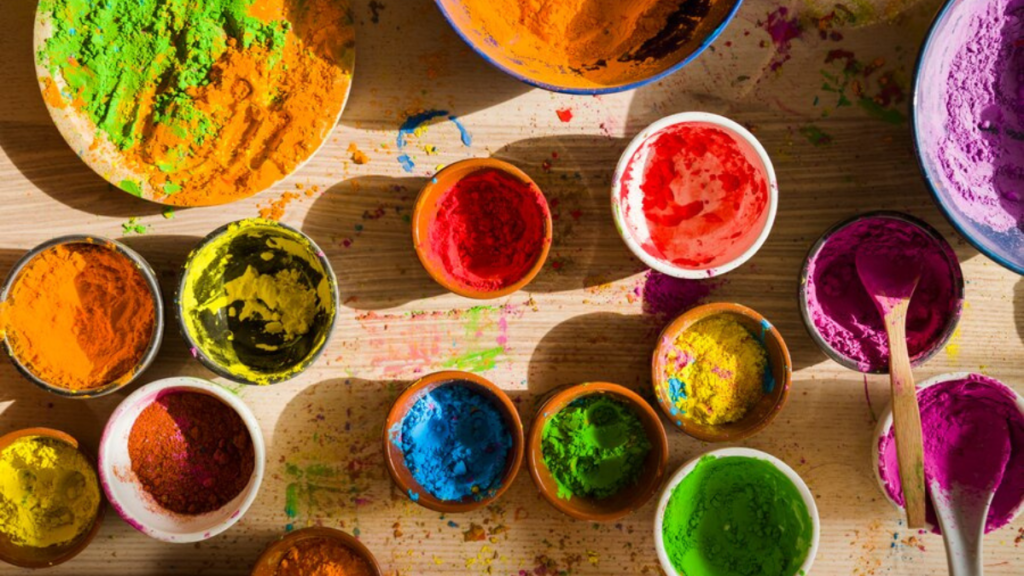In the realm of culinary arts, the visual allure of dishes often rivals their taste. Food coloring agents, the unsung heroes of the kitchen, play a pivotal role in transforming the ordinary into the extraordinary. This blog delves into the captivating world of food coloring agents, exploring their origins, types, applications, and the artistic touch they lend to a diverse array of culinary creations.
Understanding Food Coloring Agents
Exploring the role of food coloring agents enhances comprehension of their impact on visual appeal and consumer perception.
A Palette of Possibilities
Food coloring agents are substances added to food or beverages to impart color. They come in various forms, including liquids, gels, powders, and pastes, offering chefs and home cooks a broad palette to paint their culinary masterpieces. The use of food coloring agents transcends mere aesthetics, as colors can evoke emotions, enhance appetite appeal, and contribute to the overall dining experience.
Natural vs. Synthetic Colors
Comparing natural and synthetic colors reveals differences in origin, health implications, and consumer preferences in food products.
From Nature’s Bounty to Laboratory Precision
Food coloring agents can be broadly categorized as natural or synthetic. Natural colors are derived from plant, animal, or mineral sources. For example, beet juice provides a vibrant red hue, while turmeric imparts a golden yellow. On the other hand, synthetic colors are chemically synthesized and often provide a wider range of intense hues, allowing for precise color control.
Common Types of Food Coloring Agents
Various food coloring agents, including natural options like beet juice and synthetic ones like FD&C dyes, are commonly used in the food industry.
1.Carotenoids: Found in carrots, sweet potatoes, and spinach, carotenoids impart shades of orange and yellow. Beta-carotene, a well-known carotenoid, is often used as a natural food coloring agent.
2. Anthocyanins: Present in berries, grapes, and red cabbage, anthocyanins produce a spectrum of red, purple, and blue colors. They are widely used in the natural food coloring industry.
3. Chlorophyll: Derived from green leafy vegetables, chlorophyll provides vibrant green hues. It is commonly used in savory dishes and beverages.
4. Annatto: Extracted from the seeds of the achiote tree, annatto imparts yellow and orange colors. It is often used in dairy products and baked goods.
5. Synthetic Dyes: Examples include Tartrazine (Yellow 5), Red 40, and Blue 1. These dyes offer a wide range of intense colors and are commonly used in processed foods, candies, and beverages.
Applications in Culinary Creations
Food coloring agents play a vital role in culinary creations, enhancing visual appeal and artistic expression in diverse dishes.
A Feast for the Eyes
Food coloring agents find applications across a spectrum of culinary creations, turning the ordinary into the extraordinary:
1. Baked Goods: From vibrant cupcakes to intricately decorated cakes, food coloring agent’s allow bakers to unleash their creativity. Pastel shades, bold hues, and ombre effects elevate the visual appeal of baked treats.
2. Beverages: Colorful cocktails, refreshing mocktails, and eye-catching smoothies owe their visual allure to food coloring agents. These colors enhance the drinking experience, making beverages as pleasing to the eyes as they are to the palate.
3. Confections: Gummies, candies, and chocolates often feature a rainbow of colors, each achieved through the strategic use of food coloring agents. The vivid hues contribute to the whimsical and fun nature of these sweet delights.
4. Savory Dishes: While desserts often steal the spotlight, savory dishes benefit from food coloring agent’s as well. Think vibrant curries, colorful pasta, and festive rice dishes that elevate the dining experience.
Regulatory Oversight and Safety Considerations
Strict regulatory oversight ensures the safety of food coloring agents, addressing potential health concerns and maintaining consumer protection.
Balancing Aesthetics with Health
The use of food coloring agent’s is subject to rigorous regulatory oversight worldwide. Regulatory bodies, such as the U.S. Food and Drug Administration (FDA) and the European Food Safety Authority (EFSA), establish guidelines and permissible limits to ensure the safety of these additives.
Adverse Reactions and Allergies
While food coloring agents are generally considered safe for consumption, some individuals may experience adverse reactions or allergies. Synthetic dyes, in particular, have been associated with concerns, including hyperactivity in children and allergic reactions in sensitive individuals. As a response to consumer preferences, there is an increasing demand for natural food coloring agents with minimal processing.
Consumer Trends and Clean Label Movement
As consumer trends shift towards natural choices, the clean label movement emphasizes transparency in food products, influencing the demand for natural food coloring agents.
Demand for Transparency and Natural Colors
In recent years, there has been a noticeable shift in consumer preferences towards clean label products—those with simple, recognizable ingredients. This trend has spurred the demand for natural food coloring agents derived from fruits, vegetables, and other plant sources.
Innovation in Natural Colors
Food manufacturers are responding to consumer demands by exploring innovative ways to incorporate natural colors into their products. Advances in extraction techniques, such as using fruit and vegetable concentrates, have enabled the creation of natural food coloring agents that meet both aesthetic and clean label criteria.
Conclusion: Colors that Speak a Culinary Language
In the symphony of flavors, aromas, and textures that make up a delightful culinary experience, food coloring agents play the role of visual conductors. From the warm hues of autumn to the cool tones of summer, these agents add an artistic touch to our plates and glasses. As the culinary landscape continues to evolve, the use of natural colors, coupled with the ever-expanding creativity of chefs and food artisans, promises a future where the colors of our meals not only entice the eyes but also reflect a commitment to transparency and natural goodness. In the world of food, where every dish tells a story, food coloring agents are the hues that speak a culinary language all their own.







